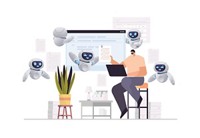Advertisement
Grab your lab coat. Let's get started
Welcome!
Welcome!
Create an account below to get 6 C&EN articles per month, receive newsletters and more - all free.
It seems this is your first time logging in online. Please enter the following information to continue.
As an ACS member you automatically get access to this site. All we need is few more details to create your reading experience.
Not you? Sign in with a different account.
Not you? Sign in with a different account.
ERROR 1
ERROR 1
ERROR 2
ERROR 2
ERROR 2
ERROR 2
ERROR 2
Password and Confirm password must match.
If you have an ACS member number, please enter it here so we can link this account to your membership. (optional)
ERROR 2
ACS values your privacy. By submitting your information, you are gaining access to C&EN and subscribing to our weekly newsletter. We use the information you provide to make your reading experience better, and we will never sell your data to third party members.
Career Tips
Inclusive language
by Brought to you by ACS Career Navigator
June 30, 2022
| A version of this story appeared in
Volume 100, Issue 24
No matter what you write, you want your documents to be read and understood by everyone in your intended audience, since they will have a wide variety of experiences, perspectives, and identities. One way to make it easier for them is to use inclusive language to convey exactly what is meant—no more and no less. While many conventions in this field are still evolving, there are some best practices that everyone should start using now.
Resources
▸ ACS Inclusivity Style Guide acs.org/inclusivityguide
▸ American Psychological Association Inclusive Language Guidelines cenm.ag/apa-inclusive-guidelines
Use accurate and consistent language. Use language that describes the people you want to include in the way they want to be described. For example, if you’re going to use honorifics (doctor or professor), be consistent and use them for everyone to whom they apply (either everyone gets a title, or no one does). Don’t include honorifics out of habit, but ask yourself whether or not that information is relevant to the content of the document. If you are writing a grant proposal, academic credentials may be appropriate. If you’re listing committee members, it may not be needed. Similarly, only mention personal characteristics (such as race, ethnicity, or country of origin) if they provide necessary context. If possible, ask your subject how they prefer to be described, and use that terminology. If that is not possible, use language used by organizations that advocate for that group.
Use gender-neutral terms. As gender-neutral language has become more common, it has become more expected. This includes using the singular pronoun “they,” which is quite common now. When writing about an unidentified or generic person, avoid the use of “he or she.” If writing about a specific person, make sure to use the pronoun that person uses.
Put the person first. Avoid placing an emphasis on a singular personal characteristic to the exclusion of others, such as referring to “the elderly” or “seniors.” It’s more accurate to use “people over 65 years of age” or “students in their last year of undergraduate education.” Similarly, use “people with pancreatic cancer” rather than “pancreatic cancer patients,” unless you are specifically talking about them in their role as patients (for example, when they are receiving diagnosis or treatment).
Purge assumptions. Read your document carefully to make sure there are no implicit assumptions that may not be valid in other cultures or regions. For example, winter does not occur at the same time everywhere in the world, so referring to specific months is more accurate. Pay attention to your use of metaphors. In the US, “stretch your legs” means to take a walk, but in Portuguese “stretch your leg” means death.
Make graphics accessible. If you are using color in graphics, make sure to choose colors that will be distinguishable by everyone, including people with low vision or color blindness. This will also help those who print the materials in black and white. Better yet, use both colors and symbols (shapes or line style) to distinguish conditions. Ensure that equations and formulas are in text format, not embedded images, so screen readers can read them.
Considering these factors will help clarify what is important about your document and sharpen your writing. And in the end, that will make your documents more clear and accurate for all readers.
Get involved in the discussion. The ACS Career Tips column is published the first issue of every month in C&EN. Send your comments and ideas for topics for future columns to careernavigator@acs.org.





Join the conversation
Contact the reporter
Submit a Letter to the Editor for publication
Engage with us on Twitter